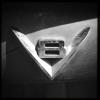How much did they really weigh?
#1

Posted 05 February 2007 - 17:23
For example the Chaparral 2g is quoted in the Falconer/Nye book as weighing 1720lbs or 782kg. However I have seen the weight of the Porsche 917 -10 turbo can am car listed as 1525lbs/693kg.
Was the Porsche really 200lb/100kg lighter than the Chapparal?
The 1960 Lotus 18 GP car was quoted as weighing 770lb/350kg. As a minimum weight was imposed in the 1961 1.5litre formula was the Lotus 18 the lightest GP car ever?
Advertisement
#2

Posted 05 February 2007 - 17:49
In the case of Can-Am cars it could be 'put it on the weighbridge' and see what it weighs' so there's no consistency about the weight of fuel, oil or coolant between the two cases you mention.
#3

Posted 05 February 2007 - 19:11
I had considered the lotus 12 at , supposedly, 700lb but it is said that Colin Chapman refused to admit it was a GP car,perhaps as it broke so often!
I wonder, if you ignore F2 cars etc in F1 races , if the Gordinis of 1952-54 might win the prize?
I thought of the 4 cylinder BRM but that was 1074lb according to Tony Rudd.
As a BTW I was amused to see at the Goodwood Renault celebration that the very earliest GP Renault (1902 or close) had a 7 litre engine and weighed a claimed 750kg. If you could build a 7litre car today at 750kg which could survive running on rough roads you would be considered pretty smart.
#4

Posted 05 February 2007 - 20:34
#5

Posted 05 February 2007 - 22:02
1948 Gordini Type 15 450
1950 Gordini Type 15 680 (Yes, a 50% increase on the earlier car)
1952 Gordini Type 16/20 644
1949 Cooper T12 - JAP 410
1952 Cooper T20 - Bristol 510
1957 Cooper T43 - Climax 368
1958 Cooper T45 - Climax 380
1959 Cooper T51 - Climax 460
1960 Cooper T53 - Climax 435
1958 Lotus 16 - Climax 360
1959 Lotus 16 - Climax 410 (14% increase on the previous year)
1960 Lotus 18 - Climax 390
And he doesn’t give a weight for the Lotus 12!
But there is no way of knowing that whether the cars were all weighed on the same basis, which comes back to Mariner’s original question: How much did they actually weigh?
#6

Posted 05 February 2007 - 22:49
Theme Lotus quotes the weight of the 12 as 660lbs, or 300kgs.
#7

Posted 05 February 2007 - 23:53
#8

Posted 06 February 2007 - 01:42
#9

Posted 06 February 2007 - 11:33
#10

Posted 06 February 2007 - 12:02
Remember that Lotus 12 cars had 11 entries in F1 races by Lotus in 1958 with 1960 cc or bigger engines.
The second edition of my 160+ page self published book (in full colour) on the Lotus 12 and my car in particular is at the binders right now so please contact me if you would like more details.
#11

Posted 06 February 2007 - 18:41
Originally posted by Geoff E
Wasn't there a period when the cars were weighed without their wheels?
Without tires, I believe. I swear I've seen a photo from the thirties, of a Mercedes GP car being weighed, and it is on wire wheels with no tires. I imagine that this was some interpretation of dry weight, with all the fluids drained out as well.
I could also be imagining this.
-William
#12

Posted 07 February 2007 - 14:52
I would guess the oil/water and fuel in your Lotus 12 may weigh 25 -30kg so that would suggest that the Lotus 12 weighed just under 400kg dry. That is interesting because I originally asked the question for two reasons.
1) It seemed strange to me that most teams struggled to get down to the 450kg limit of the 1.5 litre formula from 1961 so how could the previous generation of cars weigh so much less than 400kg as was claimed. After all the power of a 1.5 litre Climax was a bit below a 2.5 Climax so the later cars could be a bit lighter and I doubt that the Climax v-8 weighed much more of less than the bigger 2.5 litre straight 4.
2) I saw a test somewhere ( EVO magazine?) of two older F1 cars versus modern sports cars ( a Porsche 911 I think). The weight of the Lotus 16 and a later Brabham were also around 400kg. Unfortunately I don't have the magazine with me.
What I think all this means is that a lucky modern person driving a Caterham 7 with a highly tuned rover K or a Vauxhall engine has a vehicle of about ( roughly) the same weight and power as a 1960 to 1965 GP car. The modern tyres should give as much or probably more grip than the old Dunlop R5's etc. So if you are such an owner you should be able to break Jim Clarks's lap times on any circuit that hasn't changed much.
Assuming of course you are as good as Jim Clark. Any takers.....














